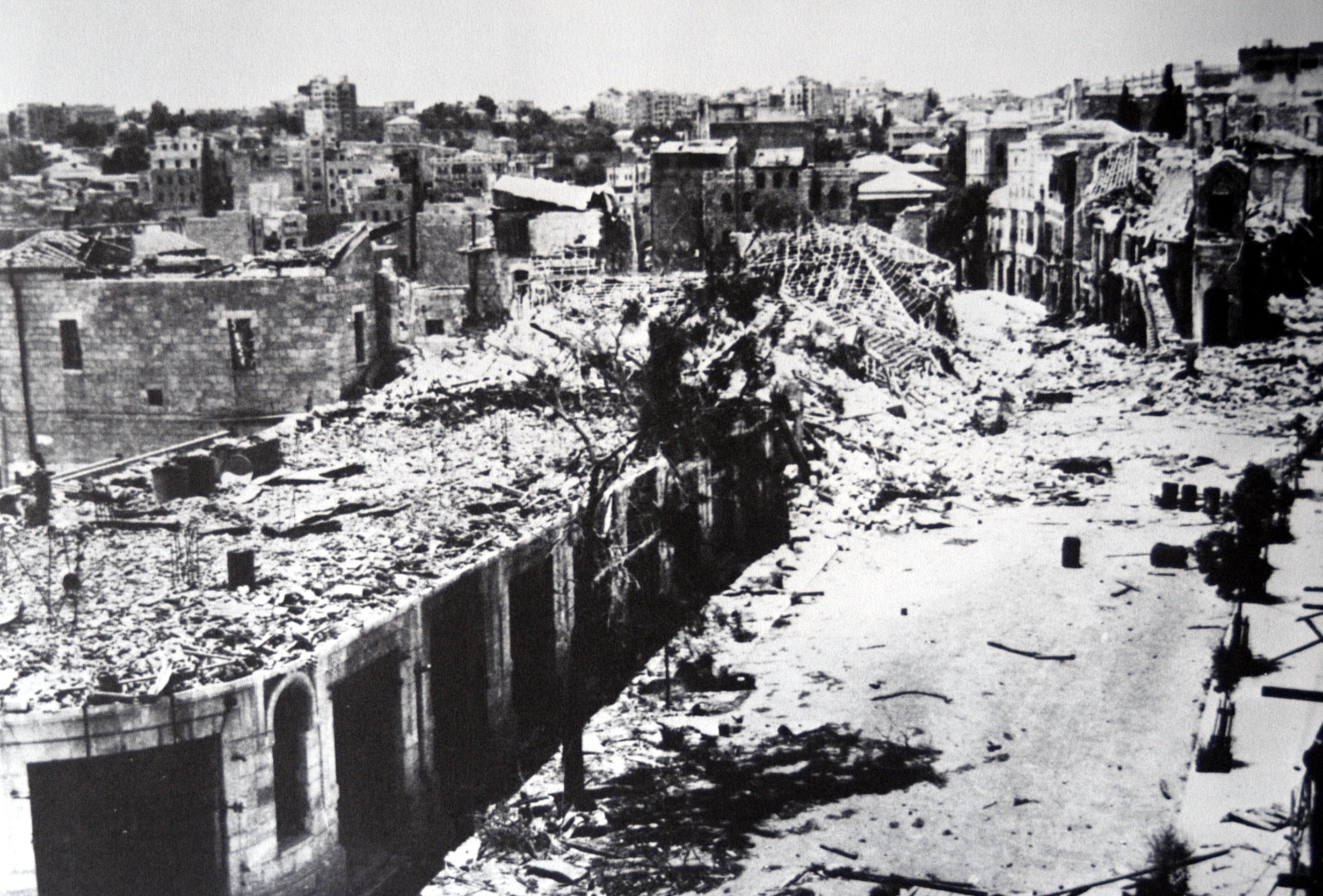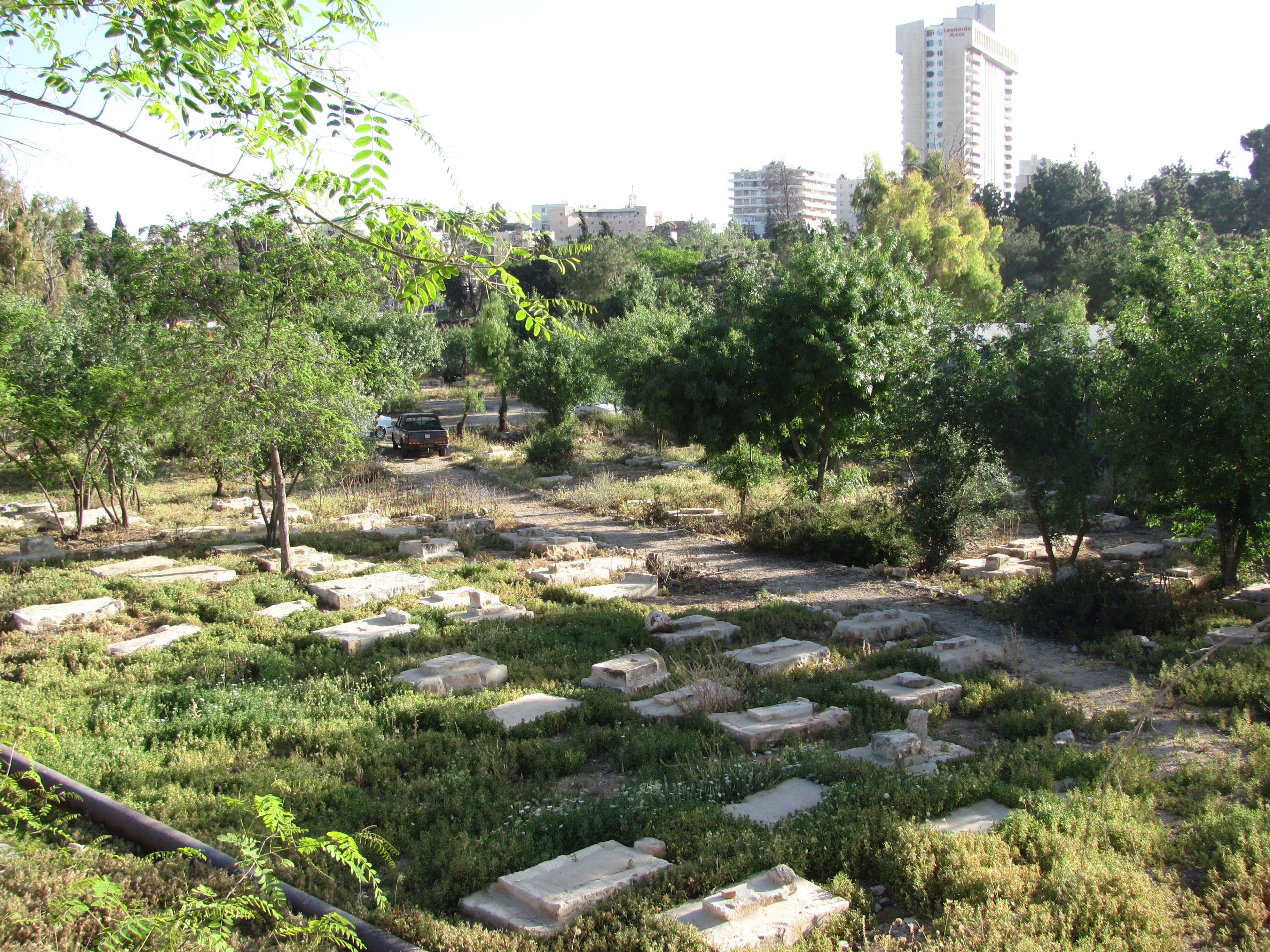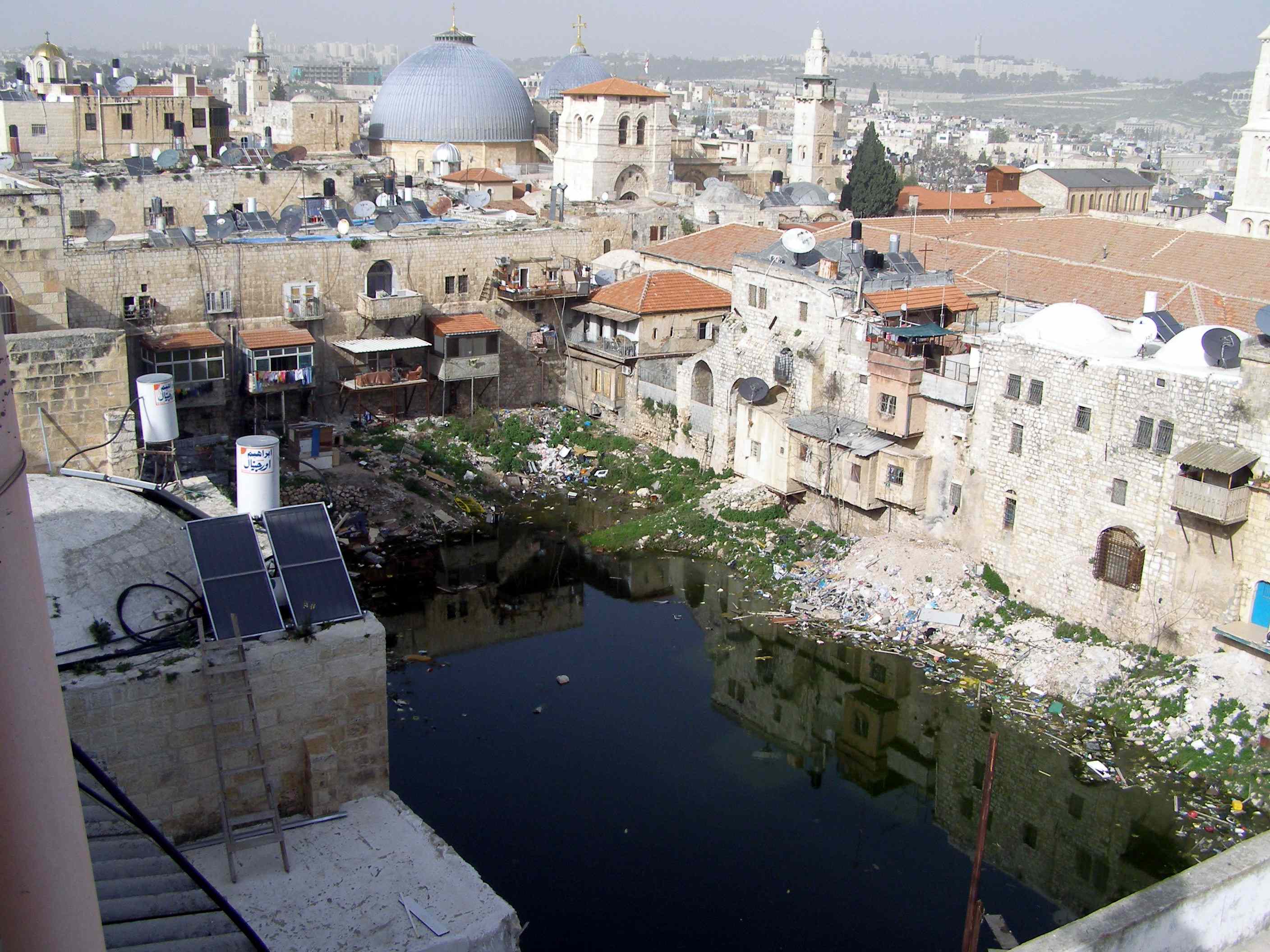|
Mamilla
Mamilla ( he, ממילא) is a neighbourhood of Jerusalem that was established in the late 19th century outside the Old City, west of the Jaffa Gate. Until 1948 it was a mixed Jewish-Arab business district. Between 1948 and 1967, it was located along the armistice line between the Israeli and Jordanian-held sector of the city, and many buildings were destroyed by Jordanian shelling. The Israeli government approved an urban renewal project for Mamilla, apportioning land for residential and commercial zones, including hotels and office space. The Mamilla Mall opened in 2007. Geography The neighbourhood of Mamilla is located within the northwest extension of the Hinnom Valley, which extends from the southwest corner of the Old City along the city's western wall. The neighbourhood is bounded by the Jaffa Gate and Jaffa Road to the east and north, the downtown and Rehavia neighbourhood above it to the west, and Yemin Moshe's upward slope along its southwestern edge. Its total ... [...More Info...] [...Related Items...] OR: [Wikipedia] [Google] [Baidu] |
Mamilla Mall
Mamilla Mall, also called Alrov Mamilla Avenue, is an upscale shopping street and the only open-air mall in West Jerusalem. Located northwest of Jaffa Gate, the mall consists of a pedestrian promenade called Alrov Mamilla Avenue lined by 140 stores, restaurants, and cafes, and office space on upper floors. It sits atop a multi-story parking garage for 1,600 cars and buses, and a bus terminal. Designed by Moshe Safdie and developed by Alrov Properties and Lodgings Ltd. of Tel Aviv, the mall incorporates the facades of 19th-century buildings from the original Mamilla Street, as well as the original structures of the Convent of St. Vincent de Paul, the Stern House, and the Clark House. The mall is part of the Alrov Mamilla Quarter, a $400 million mixed-use development that also includes the David's Village luxury condominium project, the David Citadel Hotel, the Alrov Mamilla Hotel, and the Karta parking lot. While the overall project was approved by the municipality in the ear ... [...More Info...] [...Related Items...] OR: [Wikipedia] [Google] [Baidu] |
Mamilla Herzl2
Mamilla ( he, ממילא) is a neighbourhood of Jerusalem that was established in the late 19th century outside the Old City, west of the Jaffa Gate. Until 1948 it was a mixed Jewish-Arab business district. Between 1948 and 1967, it was located along the armistice line between the Israeli and Jordanian-held sector of the city, and many buildings were destroyed by Jordanian shelling. The Israeli government approved an urban renewal project for Mamilla, apportioning land for residential and commercial zones, including hotels and office space. The Mamilla Mall opened in 2007. Geography The neighbourhood of Mamilla is located within the northwest extension of the Hinnom Valley, which extends from the southwest corner of the Old City along the city's western wall. The neighbourhood is bounded by the Jaffa Gate and Jaffa Road to the east and north, the downtown and Rehavia neighbourhood above it to the west, and Yemin Moshe's upward slope along its southwestern edge. Its total are ... [...More Info...] [...Related Items...] OR: [Wikipedia] [Google] [Baidu] |
Turbat El-Kubakiya
Ma'aman Allah (Mamilla) Cemetery ( ar, مقبرة مأمن الله) is a historic Muslim cemetery in West Jerusalem that dates back to the Crusades, and lies just to the west of the north-west corner of the walls of the Old City of Jerusalem, near the New Gate. The cemetery, at the center of which lies the Mamilla Pool, contains the remains of figures from the early Islamic period, several Sufi shrines and Mamluk-era tombs. The cemetery grounds also contain the bodies of thousands of Christians killed in the pre-Islamic era, as well as several tombs from the time of the Crusades. Its identity as an Islamic cemetery is noted by Arab and Persian writers as early as the 11th century, and it has been characterized as "the largest and most important Muslim cemetery in all of Palestine". It was used as a burial site up until 1927 when the Supreme Muslim Council decided to preserve it as a historic site. Following the 1948 Arab–Israeli War, the cemetery and other waqf properties in W ... [...More Info...] [...Related Items...] OR: [Wikipedia] [Google] [Baidu] |
Mamilla Cemetery
Ma'aman Allah (Mamilla) Cemetery ( ar, مقبرة مأمن الله) is a historic Islam, Muslim cemetery in West Jerusalem that dates back to the Crusades, and lies just to the west of the north-west corner of the walls of the Old City (Jerusalem), Old City of Jerusalem, near the New Gate. The cemetery, at the center of which lies the Mamilla Pool, contains the remains of figures from the early Islamic period, several Sufi shrines and Mamluk Sultanate (Cairo), Mamluk-era tombs. The cemetery grounds also contain the bodies of thousands of Christians killed in the pre-Islamic era, as well as several tombs from the time of the Crusades. Its identity as an Islamic cemetery is noted by Arab and Persian people, Persian writers as early as the 11th century, and it has been characterized as "the largest and most important Muslim cemetery in all of Palestine". It was used as a burial site up until 1927 when the Supreme Muslim Council decided to preserve it as a historic site. Following t ... [...More Info...] [...Related Items...] OR: [Wikipedia] [Google] [Baidu] |
Jaffa Gate
Jaffa Gate ( he, שער יפו, Sha'ar Yafo; ar, باب الخليل, Bāb al-Khalīl, "Hebron Gate") is one of the seven main open Gates of the Old City of Jerusalem. The name Jaffa Gate is currently used for both the historical Ottoman gate from 1538, and for the wide gap in the city wall adjacent to it to the south. The old gate has the shape of a medieval gate tower with an L-shaped entryway, which was secured at both ends (north and east) with heavy doors. The breach in the wall was created in 1898 by the Ottoman authorities in order to allow German emperor Wilhelm II to enter the city triumphally. The breach and the ramp leading up to it now allow cars to access the Old City from the west. The L-shape of the historical gateway was a classical defensive measure designed to slow down oncoming attackers, with its outer gate oriented in the direction of Jaffa Road, from which travellers including pilgrims arrived at the end of their journey from the port of Jaffa. Names ... [...More Info...] [...Related Items...] OR: [Wikipedia] [Google] [Baidu] |
Hezekiah's Pool
Hezekiah's Pool ( he, בריכת חזקיהו, ''Brikhat Hizkiyahu''), or the Patriarch's Pool, located in the Christian Quarter of the Old City of Jerusalem, was once a reservoir forming part of the city's ancient water system. History Flavius Josephus referred to the pool as Amygdalon, meaning 'almond tree' in Greek, but it is very likely that he derived the name phonetically from the Hebrew word ''migdal'', meaning 'tower', thus it is believed that the original name was Pool of the Tower or Towers. The pool is also known as the ''Pool of Pillars'', or the ''Pool of the Patriarch's Bath'' (Arabic: ''Birkat Hammam el-Batrak''). The pool is believed to be the upper pool referred to in the Books of Kings (), built by King Hezekiah , who met messengers from the king of Assyria there. At a later time it was fed from the Mamilla Pool, one of the three reservoirs constructed by Herod the Great Herod I (; ; grc-gre, ; c. 72 – 4 or 1 BCE), also known as Herod the Great, wa ... [...More Info...] [...Related Items...] OR: [Wikipedia] [Google] [Baidu] |
Clock Tower
Clock towers are a specific type of structure which house a turret clock and have one or more clock faces on the upper exterior walls. Many clock towers are freestanding structures but they can also adjoin or be located on top of another building. Some other buildings also have clock faces on their exterior but these structures serve other main functions. Clock towers are a common sight in many parts of the world with some being iconic buildings. One example is the Elizabeth Tower in London (usually called "Big Ben", although strictly this name belongs only to the bell inside the tower). Definition There are many structures which may have clocks or clock faces attached to them and some structures have had clocks added to an existing structure. According to the Council on Tall Buildings and Urban Habitat a structure is defined as a building if at least fifty percent of its height is made up of floor plates containing habitable floor area. Structures that do not meet this crite ... [...More Info...] [...Related Items...] OR: [Wikipedia] [Google] [Baidu] |
Ottoman Empire
The Ottoman Empire, * ; is an archaic version. The definite article forms and were synonymous * and el, Оθωμανική Αυτοκρατορία, Othōmanikē Avtokratoria, label=none * info page on book at Martin Luther University) // CITED: p. 36 (PDF p. 38/338) also known as the Turkish Empire, was an empire that controlled much of Southeast Europe, Western Asia, and Northern Africa between the 14th and early 20th centuries. It was founded at the end of the 13th century in northwestern Anatolia in the town of Söğüt (modern-day Bilecik Province) by the Turkoman tribal leader Osman I. After 1354, the Ottomans crossed into Europe and, with the conquest of the Balkans, the Ottoman beylik was transformed into a transcontinental empire. The Ottomans ended the Byzantine Empire with the conquest of Constantinople in 1453 by Mehmed the Conqueror. Under the reign of Suleiman the Magnificent, the Ottoman Empire marked the peak of its power and prosperity, as well a ... [...More Info...] [...Related Items...] OR: [Wikipedia] [Google] [Baidu] |
Souk
A bazaar () or souk (; also transliterated as souq) is a marketplace consisting of multiple small stalls or shops, especially in the Middle East, the Balkans, North Africa and India. However, temporary open markets elsewhere, such as in the West, might also designate themselves as bazaars. The ones in the Middle East were traditionally located in vaulted or covered streets that had doors on each end and served as a city's central marketplace. Street markets are the European and North American equivalents. The term ''bazaar'' originates from Persian, where it referred to a town's public market district. The term bazaar is sometimes also used to refer to the "network of merchants, bankers and craftsmen" who work in that area. The term ''souk'' comes from Arabic and refers to marketplaces in the Middle East and North Africa. Evidence for the existence of bazaars or souks dates to around 3,000 BCE. Although the lack of archaeological evidence has limited detailed studies of the e ... [...More Info...] [...Related Items...] OR: [Wikipedia] [Google] [Baidu] |
Highway 60 (Israel)
The following highways are numbered 60: International * Asian Highway 60 * European route E60 Australia * Bruxner Highway * Dawson Highway (Rolleston to Gladstone) - Queensland State Route 60 Brazil * BR-060 Canada * Alberta Highway 60 * Manitoba Highway 60 * Newfoundland and Labrador Route 60 * Ontario Highway 60 * Saskatchewan Highway 60 China * G60 Expressway Hungary * M60 motorway (Hungary) India * Israel/Palestine * Highway 60 (Israel–Palestine) Italy * Autostrada A60 Japan * Obihiro-Hiroo Expressway Jordan * Korea, South * Seoul–Yangyang Expressway *Gukjido 60 New Zealand * New Zealand State Highway 60 Philippines * N60 highway (Philippines) United Kingdom * British A60 * British M60 United States * U.S. Route 60 * Alabama State Route 60 * Arkansas Highway 60 * California State Route 60 * Colorado State Highway 60 * Florida State Road 60 * Georgia State Route 60 ** Georgia State Route 60 (former) ** Georgia State Route 60 (former) * Idaho St ... [...More Info...] [...Related Items...] OR: [Wikipedia] [Google] [Baidu] |
Highway 1 (Israel)
The following highways are numbered 1. For roads numbered A1, see list of A1 roads. For roads numbered B1, see list of B1 roads. For roads numbered M1, see List of M1 roads. For roads numbered N1, see list of N1 roads. For roads numbered S1, see List of highways numbered S1. International * AH1, Asian Highway 1, an international route from Japan to the Turkey, Turkish-Bulgarian border * European route E01 (Northern Ireland to Spain) * *Highway 1 (Afghanistan), also called A01 and formally called the Ring Road, circles Afghanistan connecting Kabul, Ghazni, Kandahar, Farah, Herat, and Mazar. Albania * National Road 1 (Albania), road running from border Montenegro (Hani i Hotit) to Tirana. * Albania–Kosovo Highway Algeria * Algeria East–West Highway Andorra * CG-1 Argentina * National Route 1 (Argentina), National Route 1 * National Route A001 (Argentina), National Route A001 * Brigadier Estanislao López Highway, Santa Fe Provincial Highway 01 Austria * West A ... [...More Info...] [...Related Items...] OR: [Wikipedia] [Google] [Baidu] |







.jpeg/1200px-Turkey_(68742801).jpeg)